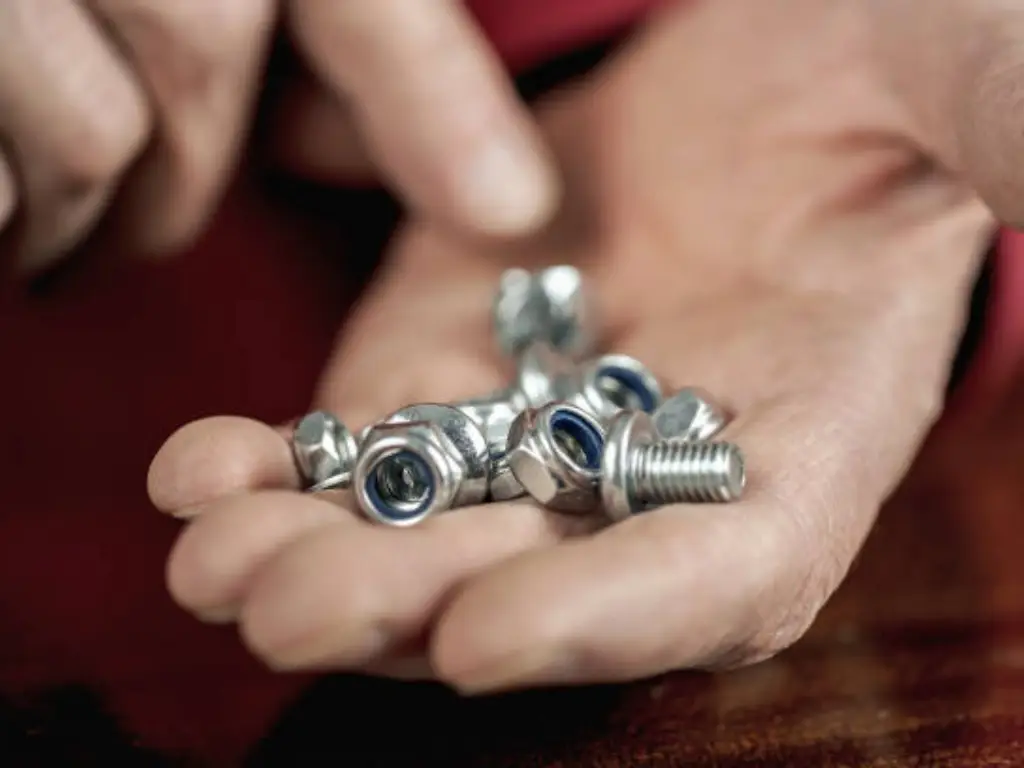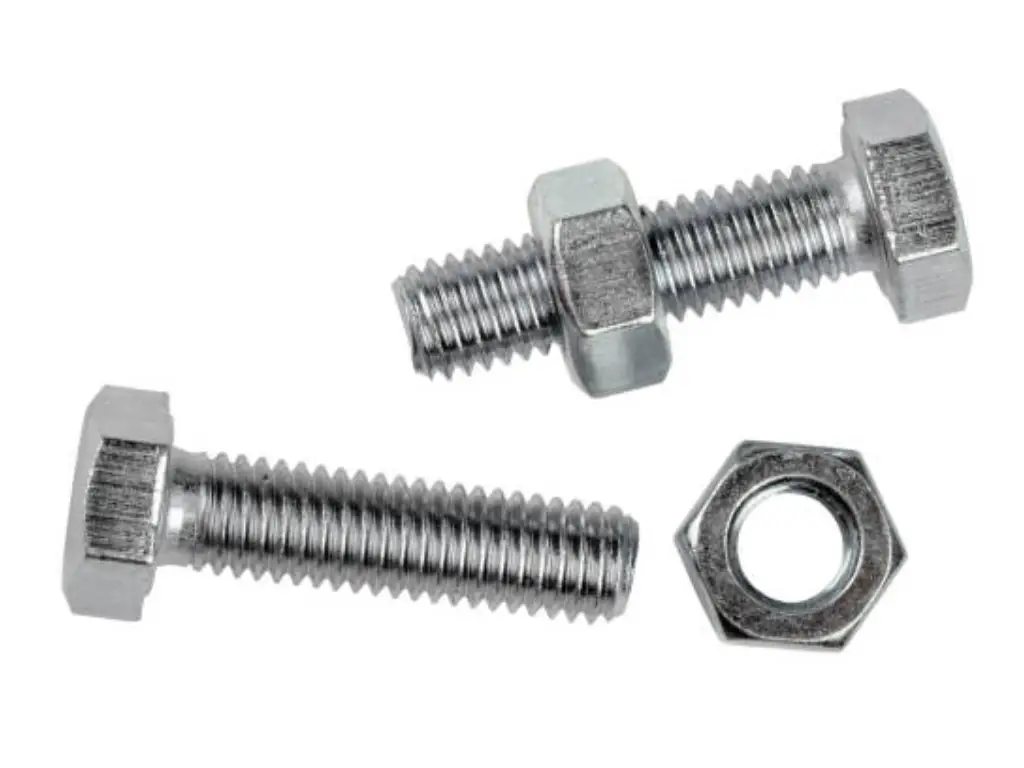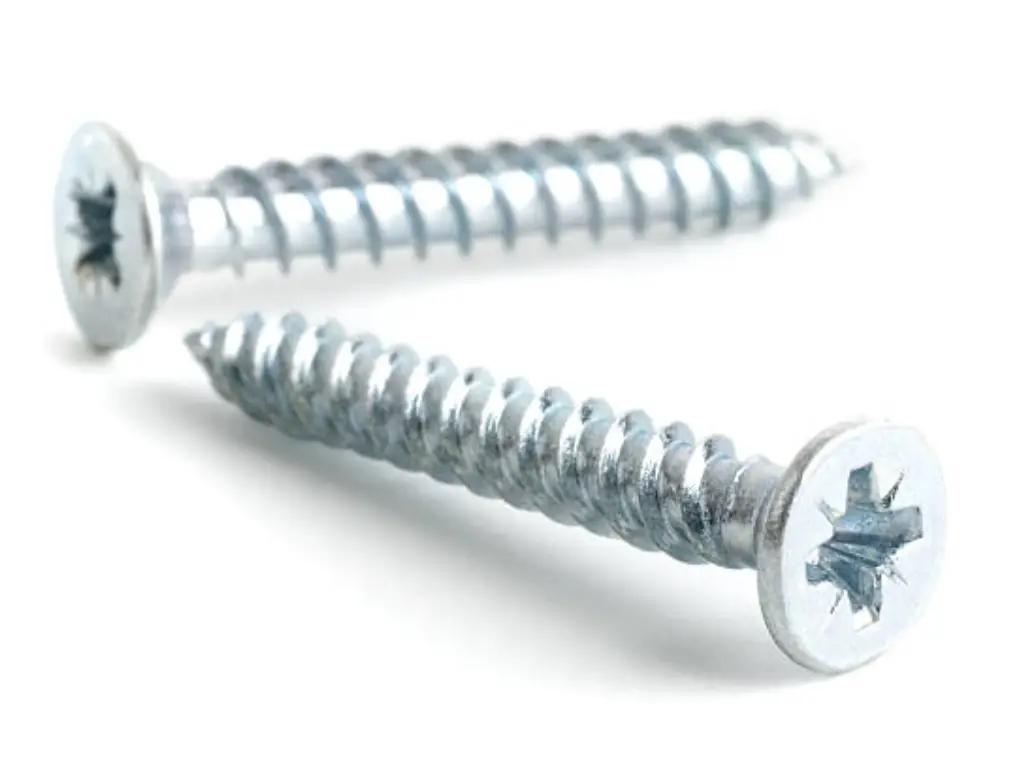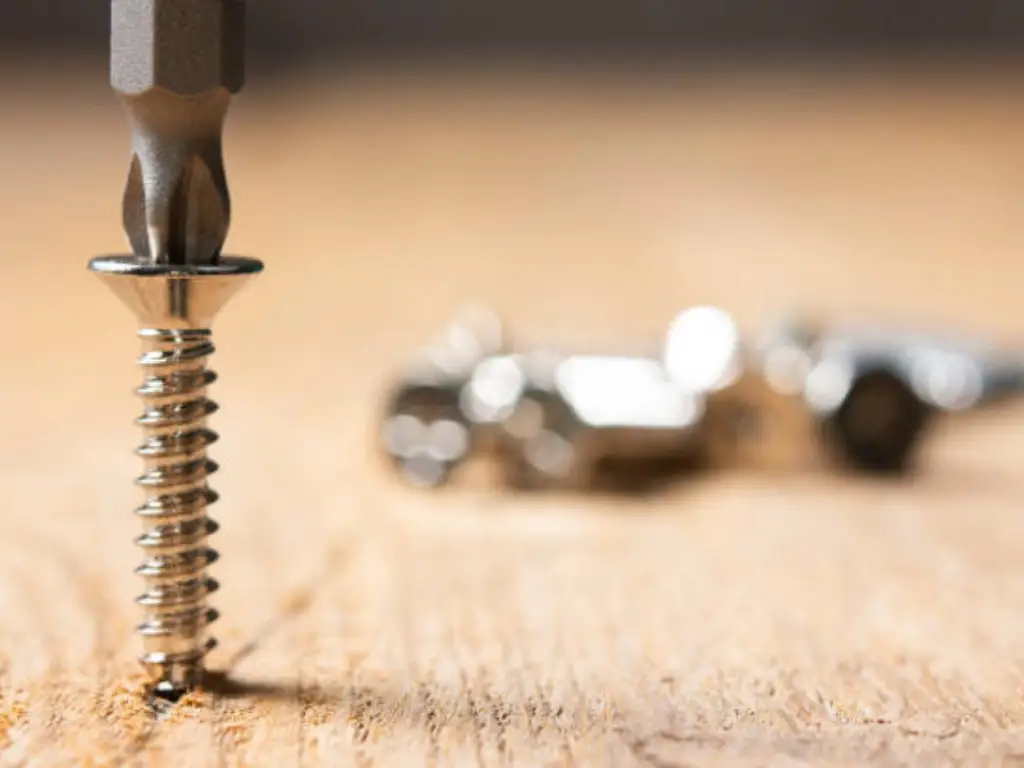Preface
When starting a new project that includes joining materials, you may face the famous challenge of choosing between screws and bolts. These are important in building as well as manufacturing or even do it yourself projects though their specific applications sometimes make them confusing. To guarantee the longevity, security, and efficiency of your job; one must distinguish between these two fasteners. Here we shall look at the different features, uses, and advantages of screws and bolts, highlighting their distinct differences so that you can make informed choices concerning your next project.
Basic Definitions of Bolts and Screws

Understanding what bolts and screws are demands a deeper look before we proceed to the nitty-gritty. A bolt is any one of variously shaped pieces of metal, usually with a head at one end, designed to be inserted through holes in assembled parts and secured by a mating nut that is tightened by applying torque or pressure. Bolts find applications where high strength is expected such as heavy machinery and construction projects. Different types of bolts have been developed including machine bolts and hex bolts based on the type of material they are intended for.
While a screw refers to an externally threaded fastener that has threads along its entire length, which can be screwed into wood or other materials without requiring additional components like nuts. The screws generate their own threads when driven into the material they are used on for secure holding. Examples include sheet metal screws, drywall screws, and machine screws among others. Unlike screwing method that use separate nuts to tighten the screw; bolting relies on its self-threading nature while being inserted in-between two materials.
Key Criteria for Differentiating Bolts and Screws
To determine whether to use a bolt or a screw for your project, there are few factors that you can consider. One way of doing this is by looking at their thread length and if they need a nut for installation. Bolts have an unthreaded section near their head and only threads at the shaft’s end; therefore, they require separate nuts to ensure secure joiner. On the other hand, screws are threaded alongside their entire length and create their own thread in materials that they are used in so no need of nuts.
They also differ in their installation process. Bolts usually require tightening through tools like spanner or wrench while applying a washer to ensure even distribution of clamp load all over its surface. In contrast, screws can be driven into material with a power tool using either a driver bit or screwdriver attachment making them more flexible when compared to the rather clumsy use of nuts and bolts. Moreover, these types offer extra protection especially when holding materials like timber since threads may dig deep into it holding it tightly in place.
Material and Application Guide
The choice between bolts and screws is often based on the material you are working with as well as your project’s specific requirements. Bolts are commonly used for thicker materials like metal or wood where there can be a threaded hole to tap in and secure using a nut on the other end. For bolts used in outdoor areas or harsh environments, it is common to go for stainless steel and other corrosion resistant materials so that they become long lasting and tough. If the project demands high clamping force together with structural integrity, such as those found in construction frameworks or heavy machinery, then bolts would be the preferred choice.
On contrary, screws are usually associated with when you need to use thin materials also whenever tapped holes would not be practical. Screws are frequently employed in sheet metal, drywall, and softer woods among others whereby their threading ability guarantees a snug fit without necessitating any nut. When there is thin metal surface involved within a design, the fastener of choice has to be sheet-metal screw while machine screw is used as an alternative in pre-tapped holes of machineries plus electronics. Additionally, screws come in different materials and coatings that match the requirements of various environments; for instance stainless steel screws are meant for dealing with cases of corrosion whereas nylon ones are selected due to their light weight and nonconductive nature.
Common Bolt Types and Their Uses

| Bolt Type | Description | Common Uses |
| Hex Bolts | Bolts with a six-sided head, designed for easy use with a wrench or spanner. | Building construction, machinery assembly, heavy equipment |
| Carriage Bolts | Round-headed bolts with a square section under the head that bites into wood to prevent rotation. | Wooden structures, furniture assembly, outdoor decking |
| Lag Bolts | Also known as lag screws, these are heavy-duty bolts with a hex head and coarse threads for wood or concrete. | Securing heavy objects to wood or masonry, deck construction |
| Shear Bolts | Specialized bolts designed to break under a specific shear force to protect critical components. | Safety applications, machinery with overload protection |
| Anchor Bolts | Bolts used to attach structures to concrete, with a threaded end that protrudes from the concrete. | Securing structural supports, heavy machinery bases |
| U-Bolts | U-shaped bolts used to clamp pipes or round objects to surfaces. | Securing pipes, automotive components, marine applications |
| Eye Bolts | Bolts with a looped head, used for attaching ropes or cables. | Lifting applications, securing wires or cables |
| Flange Bolts | Bolts with an integrated flange that distributes the load, eliminating the need for a separate washer. | Automotive applications, machinery assembly |
| Square Head Bolts | Bolts with a square head, often used in older constructions or for a rustic appearance. | Restoration projects, construction, woodworking |
| T-Bolts | Bolts designed to be used in a T-slot track, providing adjustable positioning. | Assembly of frames, clamps, and sliding mechanisms |
Bolts come in many different forms, each of which serves specific purposes and materials. Among the most popular are hex bolts, which find great use in building and machine works due to their ability to hold tight as well as ease with which they can be used with a wrench or spanner; these have six-sided heads. Smoothing round headed carriage bolts form another group while underneath them is squared section that bites into wood during tightening of nut so that it does not rotate freely. These are commonly used in wooden structures where you want a nice neat finish.
Lag bolts are other words lag screws heavy-duty fasteners made for wood or concrete having a hexagonal head and coarse thread which provides great grip on the material. Shear bolts are specialized bolts employed in situations where a bolt is specifically meant to break under certain shear force so as to safeguard other critical components from any damage. Being able to recognize the unique variations amongst these types of bolts and their respective uses will help you make the right selection for your project, be it holding down heavy equipment or assembling basic wooden structures.
Popular Screw Types and Their Applications
| Screw Type | Description | Common Applications |
| Wood Screws | Pointed end to bite into wood, available in various lengths and thicknesses | Carpentry, furniture assembly |
| Sheet Metal Screws | Sharp threads designed to screw into thin metal surfaces, providing a tight hold | HVAC systems, automobiles, panel constructions made from metal |
| Machine Screws | Used for fixing appliances in pre-tapped holes, available with different head styles (socket, flat) | Machineries, electronics, appliances |
| Drywall Screws | Bugle-shaped heads to prevent tearing, used for attaching drywall to wooden or metal studs | Drywall installation |
| Self-Tapping Screws | Designed to create their own threads in the material, eliminating the need for a pre-drilled hole | Metal and plastic assemblies, automotive applications |
| Lag Screws | Heavy-duty screws with hex heads, used for securing heavy objects to wood or masonry | Decks, construction, wood to masonry |
| Deck Screws | Coated to resist corrosion, used specifically for outdoor wooden deck construction | Outdoor decking |
| Concrete Screws | Hardened screws designed to anchor into concrete, brick, or block | Masonry, concrete fastening |
| Self-Drilling Screws | Combine a drill bit with a screw, allowing them to drill and fasten in one step | Metal roofing, steel framing |
| Set Screws | Headless screws used to secure an object within or against another object without protruding | Securing gears, pulleys, and collars to shafts |
Different materials and applications require a wide range of screws. Wood screws are the most common type that have a pointed end to enable them bite into wood. They are often used in carpentry and furniture assembly. On the other hand, sheet metal screws have sharp threads that screw into thin metal surfaces giving them tight holds. Typically you find this kind of screws in HVAC systems, automobiles, and panel constructions made from metallic sheets.
Machine screws are also popularly used especially for fixing appliances on pre-tapped holes in machineries. With different head styles like socket head or flat head among others you can choose one according to your needs. Unlike machine screws, drywall screws come with bugle-shaped heads which prevent tearing when attaching drywall to either wooden or metal studs. The drive recesses and driver bit types also differ among screw designs with such as Phillips, Torx, hexagonal ones providing different levels of torque and security measures during driving.
Strength Comparison: Bolts vs Screws

As far as durability goes, bolts are generally better than screws due to their design and the substances they are used with. Bolts find common application in places where a very large clamping force is needed-for example, heavy machines or structures in framework forms. The use of nuts with bolts provides more secure and robust connections that can withstand higher shear and tensile forces. This non-threaded part adds extra strength to the bolt particularly in shear force applications where the bolt moves horizontally.
Though not typically as strong as bolts, screws provide adequate strength for many purposes, especially when it comes to timber, plastic or thin metal. A screw’s threads allow for secure bonding within the material whereas its facility to cut its own thread is an advantage where there is no provision of a nut during application. Nevertheless, screws are prone to being stripped when subjected to excessive force or high torque especially if materials are not pre-drilled or screws over-tightened. However, comparing bolt vs screw strength usually boils down to specific applications and materials used.
Installation Process: Bolts vs Screws
This makes fastener selection a matter of preference as the installation process for bolts and screws varies greatly. In order to insert it through the hole, a bolt requires a pre-drilled hole that can either be threaded or used with an appropriate nut. Finally, after passing the bolt through the hole, its end is fitted with a nut that is tightened to ensure bonding. Sometimes this process would require specific tools such as spanner or wrenches and in certain instances, washers are included so as to maintain equal clamping force over material’s surface.

On the other hand, screws may not always need pre-drilling because their threads allow them to make their own thread in any material they come across. This makes screwdriver or power drill bit installations more convenient and faster in many situations. However, for materials like hardwood or dense metal, a pilot hole might be required to prevent the material from splitting or the screw from being damaged. Therefore, screwing-in is generally easier and flexible for the majority of do-it-yourself undertakings which is why they remain a favorite among most artisans.
Pros and Cons of Using Bolts vs Screws
| Criteria | Bolts | Screws |
| Strength | High strength, ideal for heavy-duty applications | Moderate strength, sufficient for many applications but not as strong as bolts |
| Torque Resistance | Can withstand high torque levels, fewer incidences of loosening under vibration | Lower torque resistance, may loosen under high vibration |
| Installation | Requires more time, additional parts like nuts and washers, and tools like wrenches | Quick and easy installation, often without pre-drilled holes |
| Durability | Highly durable, suitable for structural and heavy machinery applications | Durable for lighter applications, may strip or damage under excessive force |
| Flexibility | Less flexible, requires specific tools and components for installation | Highly versatile, can be used in a variety of materials and applications |
| Ease of Removal | More complex to remove due to additional components | Easier to remove and adjust if needed |
| Material Compatibility | Suitable for thick materials like metal and wood | Suitable for thin materials like sheet metal, drywall, and softer woods |
| Installation Tools | Wrenches, spanners, and sometimes washers | Screwdrivers or power drills with driver bits |
| Applications | Heavy machinery, construction frameworks, high clamping force needed | Carpentry, furniture assembly, metal panels, pre-tapped holes in machinery and electronics |
| Pre-Drilled Holes | Usually required | Often not required, screws can create their own threads |
| Overall Suitability | Best for structural integrity and heavy-duty needs | Best for versatility and quick installation |
When making a choice between bolts and screws, you need to take into account their pros and cons as per the specific needs of your project. For instance, bolts are formulated much stronger and more resilient hence they are recommended for heavy duty applications where a strong and secure link is necessary. Bolts can withstand the highest torque levels and fewest incidence of loosening when exposed to hard vibrations or pressure. Nevertheless, typically it takes long time to install bolts since they require extra parts like nuts plus washers and use tools such as wrenches or spanners.
On the other hand, screws have an advantage in terms of ease of fastening as well as versatility. They quickly attach without requiring any pre-drilled holes on the material that they are being installed on which is a very big advantage because many other alternatives would require additional operations before installation. Besides being lightweight to handle; nails worm properly on various materials like wood or metal. Moreover, screws can be removed with ease if necessary. Nonetheless, screw often do not offer enough strength just like bolts in situations that may necessitate high clamping force for example under large shear or tensile stresses.
The final choice between bolt vs screw really depends on how you weigh these advantages against corresponding disadvantages basing it upon such parameters for your particular project.
Choosing Bolts or Screws for Your Project
When it comes to deciding between bolts and screws, materials being used, strength of the joint required and application are factors that one has to put in mind. When your project entails holding down heavy materials, high shear strength or significant vibration/movement; it would be better to use bolts because they have a strong design and extra security by using a nut. Bolts are highly recommended when working on structural applications where failure is not an option.
Screws might be the best bet for projects involving light materials or those that are installation oriented. They work well for drywall, wood or thin metals and they are sufficiently strong for most daily uses. Such screws can also be more convenient when there is a possibility that components will need frequent disassembling or adjustment as they can be unscrewed without damaging the material. In summary, understanding these varieties and considering the specific requirements of your project will let you know whether to use a bolt or screw.
Conclusion
Crucial to selecting the correct fastener for your project is an understanding of the major distinctions between bolts and screws. Although bolts are strong and are thus good in situations where heavy loads are involved, screws can be used in multiple instances easily hence a wide range of uses. Whether it’s a complex building work or a simple DIY activity, knowing when you should use a bolt instead of screw may lead to durability and success in any job undertaken. The material, application, and specific requirements must be taken into account while deciding on whether to use bolts versus screws so as to make an informed decision based on personal needs.
Maxave: Quality Screws and Bolts
More Than A Furniture Hardware Manufacturer
Your Sales Growth Specialist
The choice of fasteners is critical to project success. Maxave, a top player in furniture hardware, has high-quality screws and bolts that suit various needs. For innovation and quality, Maxave offers a diverse range of fasteners like stainless steel, nylon or coated items suitable for different environments and applications. It doesn’t matter if you’re working on heavy machinery or structural projects; maybe it’s a DIY task; any project will benefit from long lasting equipment offered by Maxave. Today take time to look through the extensive variety provided by Maxave in order to select the finest tools needed in your next undertaking.







